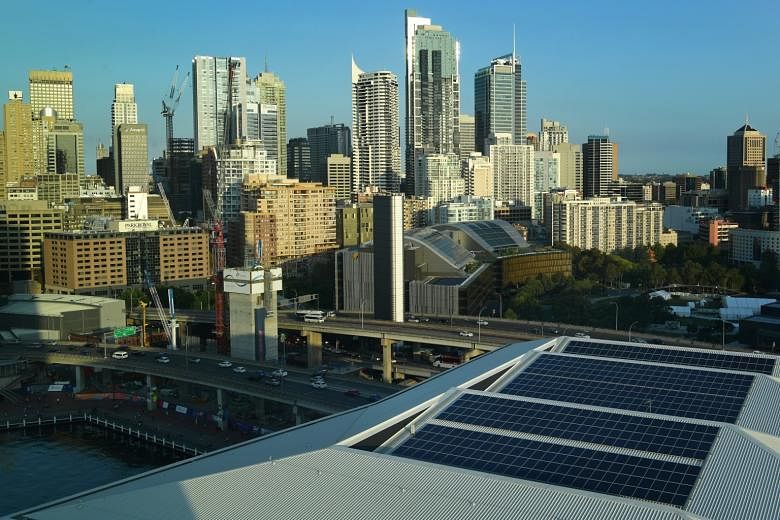SYDNEY (BLOOMBERG) - Australia's love affair with solar may be waning after another record year of installations saw panels on a world-leading third of suitable homes.
Households installed 3.2 gigawatts of rooftop solar in 2021, taking the total to more than 16 gigawatts across 3 million rooftop systems, the Australian Clean Energy Regulator said on Thursday (March 17) in a quarterly report.
That surge helped lead the nation's clean energy generation to an all-time high of 31.4 per cent of all electricity produced, more than double the share just four years earlier.
The economic appeal of solar is declining as federal government rebates wind down and network operators put in place new rules to limit and control rooftop solar exports, said Leonard Quong, a BloombergNEF analyst in Sydney.
Combined with lower retail rates, that has increased the time it takes households to pay back their systems. The stellar boom has helped alleviate some of the pressures on the government to do more to combat climate change, given the nation's role as one of the world's top fossil fuel exporters that make it one of the biggest per-capita polluters.
But with BloombergNEF forecasting a slide in new additions this year in the first drop in half a decade, households may no longer be as much of a driver in Australia's energy transition.
"Australia's residential solar market will pass its 2021 peak, and deteriorating economics will see annual capacity additions slide to 2.5 gigawatts in 2022," Quong said.
"The fall in installations have less to do with physical saturation of rooftops, although that is a factor, and more to do with the impact a tidal wave of solar is having on the market."
Meanwhile, decades of policy uncertainty and the challenges of integrating renewable energy into grids is also starting to take its toll, Quong said.
Investment in large-scale renewable energy capacity was just US$2.2 billion in 2021, down 67 per cent from its record high in 2018, according to BNEF.
"There are bright spots on the horizon - corporate power purchase agreements and state policies continue to drive demand for new capacity," Quong said.
"States' ambitions alone could see Australia exceed 60 per cent renewable energy supply by 2035."

